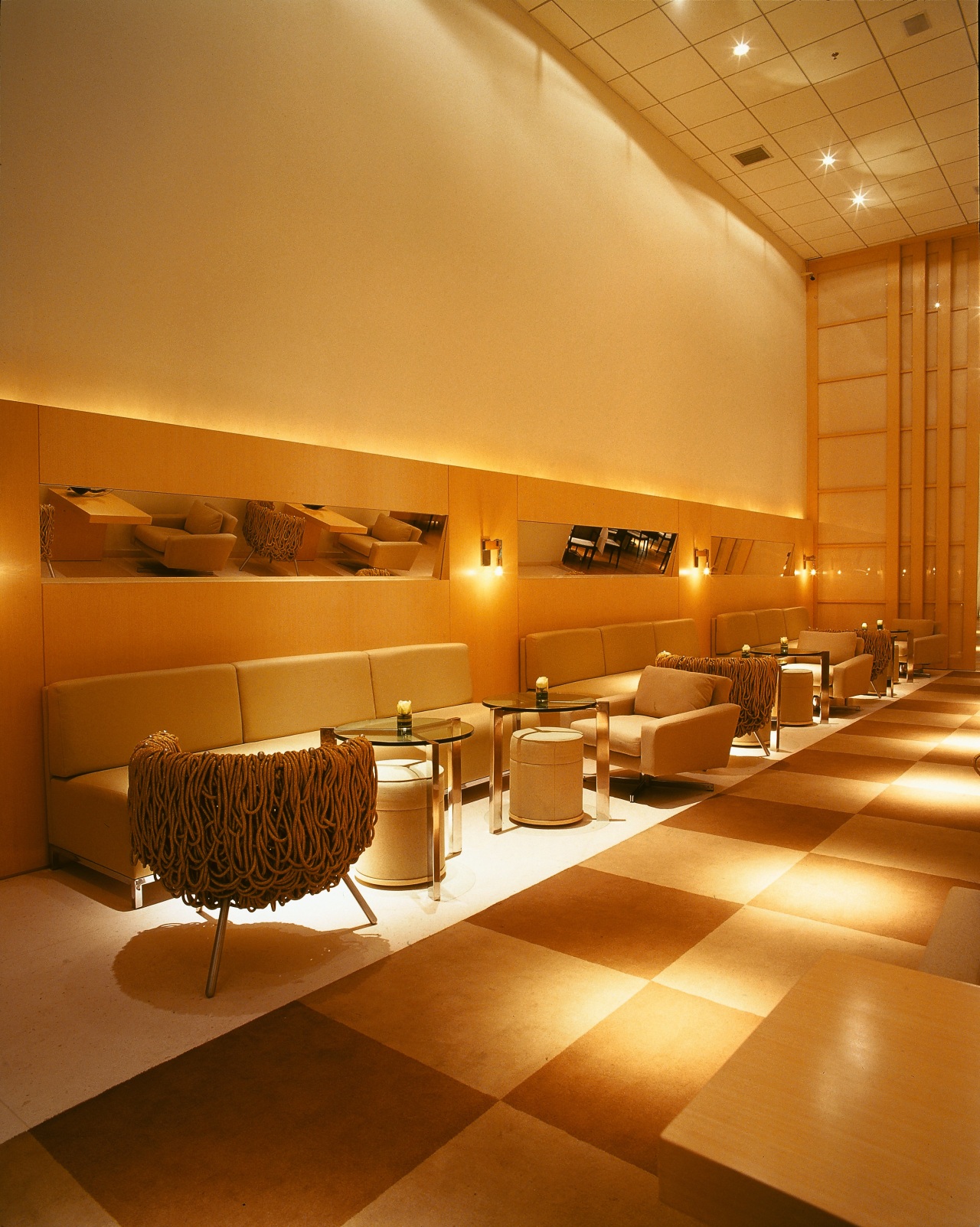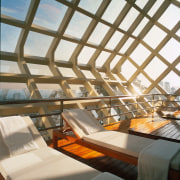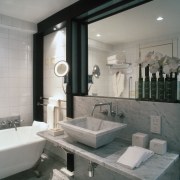Informal invitation
This boutique hotel features contemporary décor with some classic twists. The at-home ambience is designed to encourage guests to pay return visits
In the hospitality industry attracting repeat business is good business. Creating a wow factor for a new hotel may have an initial impact, but after the excitement of the opening months, the hotel still needs to be a comfortable place to stay that encourages guests to pay a return visit.
When architect Arthur Casas was asked to design the boutique Emiliano Hotel in San Paulo, Brazil, he approached the interior imagining how he would like to be greeted as a hotel guest himself.
"When travelling, I look for a hotel with spacious communal areas, few rooms, and a place where the hotel staff remember my name," says Casas. "For the Emiliano, I created an environment without excessive flourishes one that celebrates design but at the same time offers a homely atmosphere that guests will be keen to return to."
From a tropical garden within the hotel restaurant, to the extensive use of local wood, and clean lines throughout, the design has a distinctly Brazilian flavour.
Casas designed the hotel within the constraints of an already existing buildingskeleton. The building was initially intended for another purpose but was sold before it was fitted out. Within the narrow structure, he created 57 guest rooms, a restaurant, conference room and a rooftop gym and spa area. The spa offers panoramic city views through glass walls that angle out high above the hotel's front steps.
Climbing the white limestone steps, guests' first impression of the Emiliano is its cantilevered entrance cover and soaring 9m-high lobby. The drama of the space is offset by the use of natural materials such as limestone, wood and leather in a quiet palette of white and soft browns.
"Light colours found in the lobby are also used throughout the Emiliano," says Casas. "They provide guests with an ambience of serenity and calm."
There is also an Oriental minimalist influence to the hotel's interior.
"Panelling behind the reception desk makes reference to a shoji panel, a translucent Japanese screen. An economic of use of furniture and other objects in the space add to this minimalist feel."
Beyond the entry foyer, the hotel bar's décor is also kept simple, in part because the architect wanted to showcase the Brazilian Campana brothers' rope chairs.
However, Casas designed much of the furniture in the hotel himself, including the banquette seating and cocktail tables in the bar. Above them, mirrors add to the room's spacious appearance.
"I like to use mirrors in my projects," says Casas. "They highlight architectural and design features, almost eliminating the need for other pieces of art."
The hotel's restaurant is also reflected in double height mirrors and features displays of books and an open fireplace.
"The bookcases and roaring fires create a homely, intimate atmosphere for diners. These are juxtaposed with sleek, black Altherre Lievore dining chairs Throughout the hotel there is a balance between the stylish and the comfortable."
From the restaurant, under-lit stairs invite guests up to a bar on the mezzanine. Lighting plays a subtle but important role in the public areas of the hotel. Lamps which were also designed by the architect provide intimacy in the dining area and define conversation areas in the lobby.
The Emiliano's 57 guest rooms are also fitted out to create a homely environment. Architectural niches provide visual interest but the interiors focus on simple lines, natural materials and warm tones.
"As in the hotel lobby, wood is introduced in the guests' rooms to invoke a cosy atmosphere," says Casas. "The Brazilian wood and glass panel sliding doors can divide the rooms in two, separating the living room from the sleeping area."
A chequerboard carpet designed by Casas for the lobby and bar area is also featured in the guest rooms.
The bathrooms' white wall tiles, extensive use of marble and a claw-footed bath all contribute to a domestic feel.
"We envisaged the Emiliano as a hotel for relaxation. For instance, there are no swimming pools in the hotel," says Casas. "Instead, we introduced a gym and massage room in the glass-walled penthouse and also wooden Japanese hot tubs."
Credit list
Architecture and interior design
Landscape architect
Electrical engineer
Air conditioning
Audio and video
Kitchen design
Ceiling
Hardware
Curtains
Carpet
Lights
Main contractor
Civil engineer
Lift service
Security system, fire consultant, sound system
Lighting consultants
Stonework
Doorhandles
Wallcoverings
Furniture
Flooring
Bathroom utilities
Story by: Trendsideas
Home kitchen bathroom commercial design
Diving into nature
Classic looks, contemporary efficiency
Personality plus














